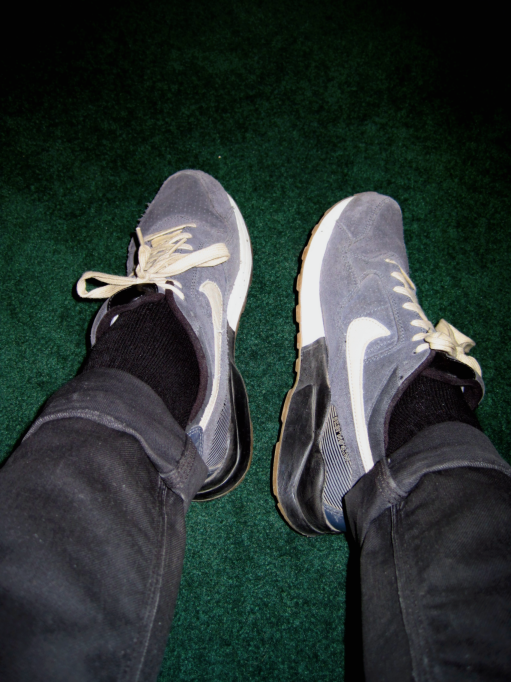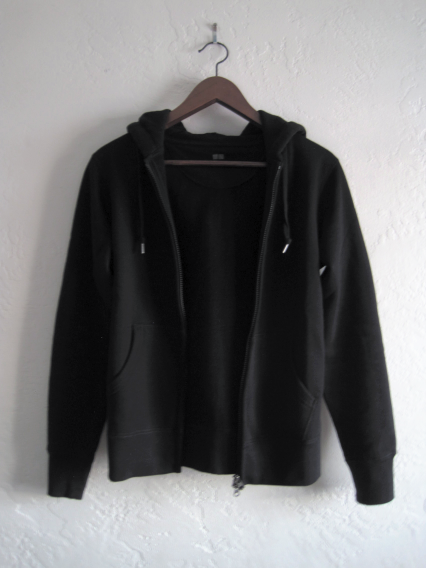-
Posts
240 -
Joined
-
Last visited
-
Days Won
2
Content Type
Profiles
Forums
Events
Gallery
Store
supertorial
Classifieds
Posts posted by saffronrevolution
-
-
i wore lil red converse hi tops as a lil boy
 1
1 -

new reebok x cordura (fw14):
other styles here:
http://www.highsnobiety.com/2014/01/19/reebok-fall-winter-2014-cordura-pack/was on the fence about the last collab, but i think the semi-tonal sole on this version pushes it into to-cop territory for me. curious to see if they also do one in black.
10 -
looking at the runway shots i was initially not impressed, but the photos bill posted above made me change my mind. this is definitely a collection that needs to be appreciated up close. yellow splatter coat might end up being a grail for me, and that fathers sweatshirt is definitely on my buy list. totally intrigued by this collection, even the weird "ugly" oversized boots
0 -
you gonna post a fit pic of the ma1? curious to see how they fit
there are fit pics of it all over the internet dude
6 -
all of my clothes go in a pile on the floor. no matter how nice the jawn, goes in the pile.
noooo meant to +rep
 1
1 -
shit. 1104 pages? i think i'll read the brother's K first...that book seems daunting enough haha.
IJ is very good, although i'd recommend the short story collection Oblivion as a better starting-off point for wallace (that's where i started, at least); it's sort of a taster for his writing style, but at 300 pages as opposed to a gargantuan 1100 (and IJ's really more like 1200, because the text on the pages of the endnotes is so purposefully tiny).

personally i liked oblivion a bit more than jest. i feel like his style's more suited to short stories/novellas than monstrous every-conceivable-topic-spanning works (but thats just me).
3 -
looks good either way ;-)
4 -
nothing wrong w/ being 18. its only wrong if you think youre the shit, at 18
air pegasus 92 QS +faded acne jawnz (ugly flash lighting)
 5
5 -
not digging the sneaks in that C.E fit. might just be cuz im not partial to geos, but i really dont think they work here. even something like nb would be better imo. definitely not neg territory tho
9 -
holy fuck! two of my favorite raf seasons in one post, way to go! RP2014 off to a good start
that attachment is dope, anywhere else stock it other than that site you posted?
er...not that i know of. sorry
0 -
oh ok sorry must have been looking at a different auction! was a size 1 shipping out of NYC, BIN at $1200. either way, totally irrelevant/unimportant at this point
0 -
no, ordered it from japan. still some sizes in stock here tho (i ended up grabbing the 1, fits true 44): http://www.waltzingmatilda.jp/item/item_detail.php?goodsid=20121026182504
total w/ proxy fees came out to about half what that guy was selling it for on ebay, lol. dude was asking $1200 for it, like hahaha...no.
edit: thanks TRICK DOM, link fixed for any interested
0 -
- Popular Post
- Popular Post
i apologize in advance for the blurry photos...
grail jacket acquired: attachment aw12 ma-1 (w/ double riri zips!)

uniqlo double-zip hoodie (hitting myself for not grabbing one earlier, really great for the price)

also some heattech gloves+socks
59 -
^ geez...does design even get lazier than that? just slapping a backpatch on an alpha ma-1 and marketing it as fashion?
6 -
yeah looks in your pic like fleece or some kinda terry fabric. probably just the grain tho
1 -
^ more info/stockists? might actually be what im looking for
0 -
as it stands, fast fashion stores like gap, h&m, zara, uniqlo, etc cater to a low-stakes buying demographic, people who are after an element of individuality w/ their clothing, but aren't willing to drop upwards of $100 on a piece that might not mean anything to them a year (or even 6 months) from point of purchase. now take into account probably the central thesis of fast fashion: to emulate the trends relevant in high fashion, but at a much lower price point so that the average consumer will not only feel comfortable purchasing it, but come back to buy more once trends have changed. this ensures, for the consumer, a consistent offering of new things that they've maybe seen similar versions of on social media, and if the stores are to remove that element of trend-riding, as in to deny the fundamental hegemony of high fashion, it would amount to suicide for the majority of these companies. i do, however, believe, the same way if we're to tackle obesity it's gonna have to start at the level of fast food chains, if change is to occur, it's gonna begin with these stores (likely responding to some worldwide surge of demand for high-quality, unexploitative garments).
i know your post wasn't just about fast fashion, and i don't necessarily disagree w/ you in that this should be changed, but my point is that there's a lot more in play right now than simple self-centeredness or laziness on the part of the consumer. greed and corruption on the part of these companies, both high fashion and fast fashion, seems to me to be the central drive for this accumulation of waste and consequently inequity for third-world countries, and people are just stuck in the mindset promulgated by those stores.
another slant (which i don't necessarily agree with) is that this exploitative manufacturing is somehow a tool for transforming these third-world countries into states with higher standards of living. like it happened with japan and korea, and its currently happening (albeit slowly) with china and indonesia. but can it happen for countries like vietnam and bangladesh, whose current standards of living are literally so low that any manufacturing boom that occurs there is just to offset the probability of a complete and total economic disaster? and i really dont know the answer to that (maybe someone's got data). sorry this turned into such a long-winded post
14 -
- Popular Post
- Popular Post
Yeah idk about you, but if I saw a guy in my area walking around in head-to-toe Lad, the first thing I'd do is call him out for not being relevant
43 -
ayyy big thanks on the east dane tip. snagged a robert geller seconds sweatshirt for about 1/3 retail
 0
0 -
3
-
if you really want to attack sobriety head on, start today, not new years. if you can pull through nye festivities that'd be already a great start.
0 -
"you should move to portland, there are so many hipsters here you'd love it!"
everyone i know who moved to portland after graduating hs is living in fucking poverty.
4 -
damn, thats some wicked brand synergy.
5 -
police bird spotlight was used to disperse party i attended last night, made me think of/revisit this thread...very pleased with what i see, glad to see your son had a phenomenal christmas.
1





Ballin' on a Budget
in supertrash
Posted
in the future everything's cheap
and everyone has a blog